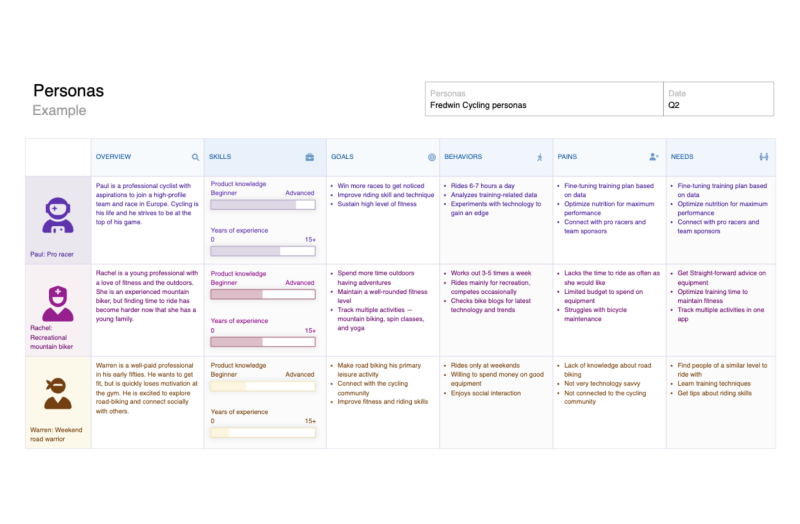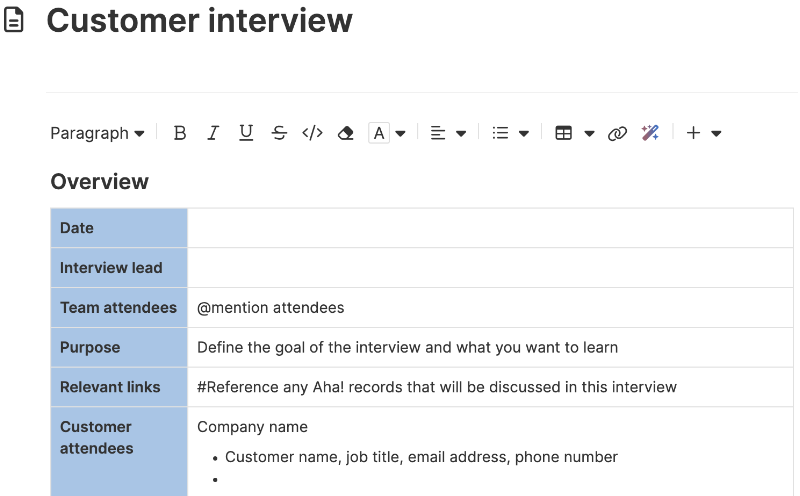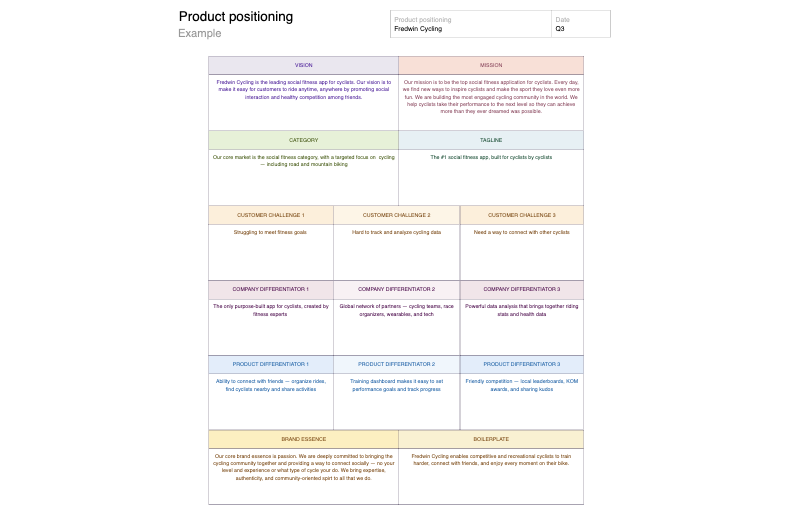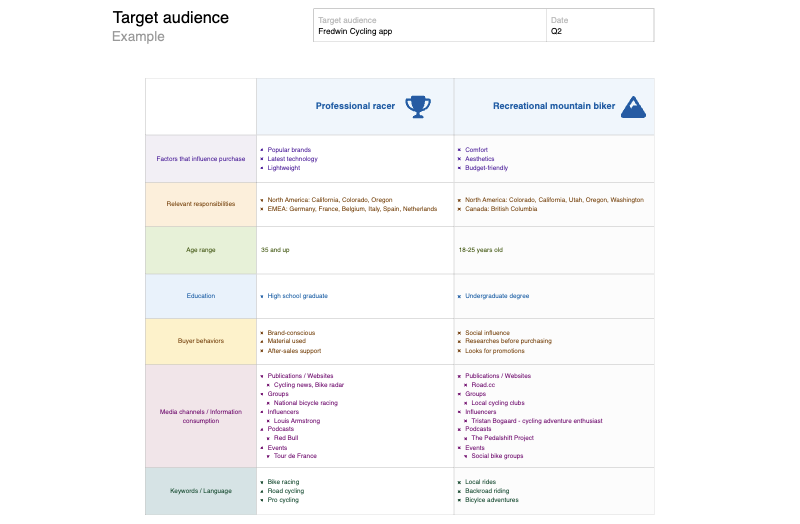Segment profile template
Understand and prioritize market segments to guide product strategy
Use template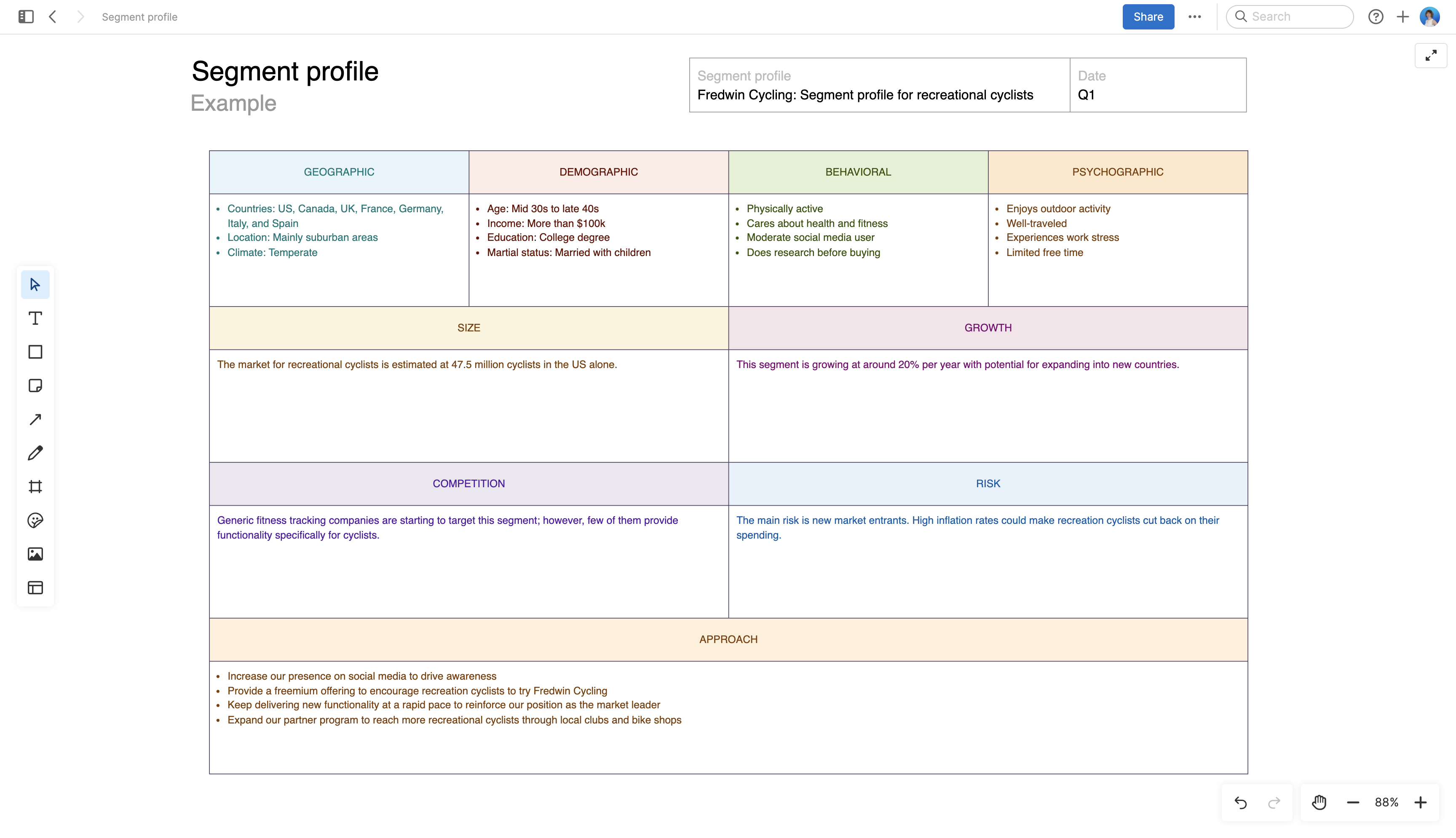
About the segment profile template
Clear segment profiles help you focus on the customers most likely to benefit from your solution — and who will help your business grow in turn. They align sales, marketing, and product teams that often see the market through different lenses. Perhaps you serve several industries or have many potential customers, and you need a way to identify where to focus next. That is when creating detailed segment profiles becomes essential.
This template helps you capture what defines each customer group — their needs, motivations, and market potential — so you can make informed choices about where to invest. The visual layout lets you compare segments side by side and see where opportunities overlap or diverge. Unlike personas, which capture individual user motivations, segment profiles zoom out to show where your product can win at a market level. When you have well-defined segment profiles, it becomes easier to say no to attractive but distracting ideas and concentrate on the segments that will create the greatest impact.
Included in the segment profile template
This segment profile template includes built-in capabilities such as:
Pre-formatted fields to capture segment characteristics, behaviors, needs, and market opportunity
Visual layout for comparing multiple segments side by side
Color-coded frames and sticky notes to highlight key insights and trends
Inline comments and collaboration features to gather team input
Guidance prompts and example segments to accelerate template adoption
An AI assistant to help summarize research and draft segment descriptions
How to use the segment profile template
Start by listing all potential customer segments. Use data from research, sales feedback, or customer interviews to group customers by shared goals or behaviors — not just demographics. If you already have many segments, begin by focusing on the few that represent the biggest revenue potential or most urgent strategic opportunity.
As you fill out the template, aim for depth rather than breadth. Capture insights that explain why customers buy (or do not): the jobs they are trying to accomplish, the constraints they face, and how they decide between alternatives. A strong segment profile makes trade-offs clear. If you cannot articulate what would make a segment a "no" for your next initiative, you probably need more detail.
Once profiles are complete, review them with your cross-functional team. Discuss what would change if you prioritized one segment over another (in roadmap decisions, messaging, or pricing). The template becomes most powerful when it directly informs which opportunities move forward and which get paused.
Best practices
Use segment profiles to transform fuzzy markets into concrete focus areas.
Turn scattered data into direction: Bring research, customer feedback, and sales input together in one place. Then, filter for what truly drives decisions — like purchase triggers, adoption barriers, or willingness to pay.
Balance size and fit: Market size might look tempting, but fit with your product vision is often a better predictor of success. If a segment requires major product changes, it is probably not a near-term priority.
Know when you are done: A complete profile should give your team confidence to decide what not to pursue. If you still feel uncertain about whether a segment is worth targeting, gather more data or refine your assumptions.
Revisit with purpose: Update profiles quarterly or when you enter new markets, shift strategy, or notice performance differences across segments. Patterns in churn, win rates, or feature requests often signal that it is time to revalidate.
Share beyond product: Encourage marketing, sales, and leadership to comment directly on the whiteboard. Segment profiles only drive alignment when teams reference them in real planning conversations.
FAQs about the segment profile template
When should I create segment profiles?
Segment profiles are most valuable when your product or market is expanding and you need clarity on where to focus next. Use them before major planning cycles or when your customer base feels too broad — they help narrow options into actionable strategy.
How do I know if my segments are too granular?
If two segments lead to the same messaging, roadmap priorities, or pricing, they might not truly be distinct. Each segment should represent a meaningful difference in how customers think, buy, or use your product.
How do I use these profiles to make decisions?
Link profiles directly to initiatives or marketing campaigns. When evaluating new opportunities, ask: "Which segment does this serve?" If the answer is not clear, it is a sign to reconsider the idea or refine your targeting.
How do I keep profiles relevant over time?
Review them whenever market conditions shift or your strategy changes. Look for indicators like lower engagement in a once-strong segment or new demand from an emerging one — those signals suggest it is time to refresh.
Is this template free to use?
Yes. To use this segment profile template, sign up for a free 30-day trial of Aha! Whiteboards. (You can also try this template in Aha! Roadmaps if you need a complete product management solution.) Easily customize the template to suit your needs, then share it with as many people as you want (for free) to streamline collaboration.
